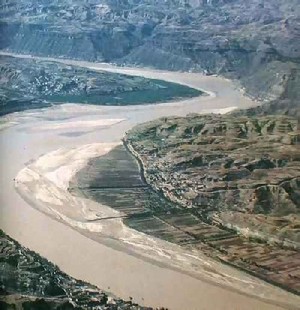Analyzing aerial photos and satellite remote sensing figures, they found that the wetlands on the plateau have shrunk more than 10 percent over the past four decades. The wetlands at the origin of the Yangtze River suffered the most, contracting by 29 percent.

|
| ©Unknown |
| Yellow River |
In addition, about 17.5 percent of the small lakes at the source of the Yangtze River have dried up, said the scientists.
"The wetland plays a key role in containing water and adjusting the water volume of the rivers," said Wang Xugen, a researcher with the Institute of Mountain Hazards and Environment.
"The shrinking of the wetland on the plateau is closely connected with global warming," Wang said, adding that -- even though rainfall has increased in the region -- the contraction of the wetland has reduced the flow of the Yangtze and Yellow rivers.
Figures provided by the World Wildlife Fund (WWF) weather station at the head of the Yangtze River showed that annual rainfall at the source of the Yangtze River increased from 260 mm during 1991-2000 to 323 mm in the period 2001-2006.
"But the increased rainfall didn't lead to more water flow in the rivers because the evaporation was so fast as a result of global warming," said Li Shijie, a researcher with the Nanjing Institute of Geography and Limnology under the CAS.
Another WWF study showed that global warming has caused glaciers to shrink, frozen earth to melt, grasslands to turn yellow and rivers to dry up in Tibet.
The Qinghai-Tibet Plateau used to boast 36,000 glaciers covering an area of 50,000 sq km which feed several of the major rivers in China and Southeast Asia. In the past 100 years, the area of these glaciers has shrunk by 30 percent.
The scientists called for more support for ecological research on the Qinghai-Tibet Plateau and better protection of the unique and vulnerable environment.



Reader Comments
to our Newsletter